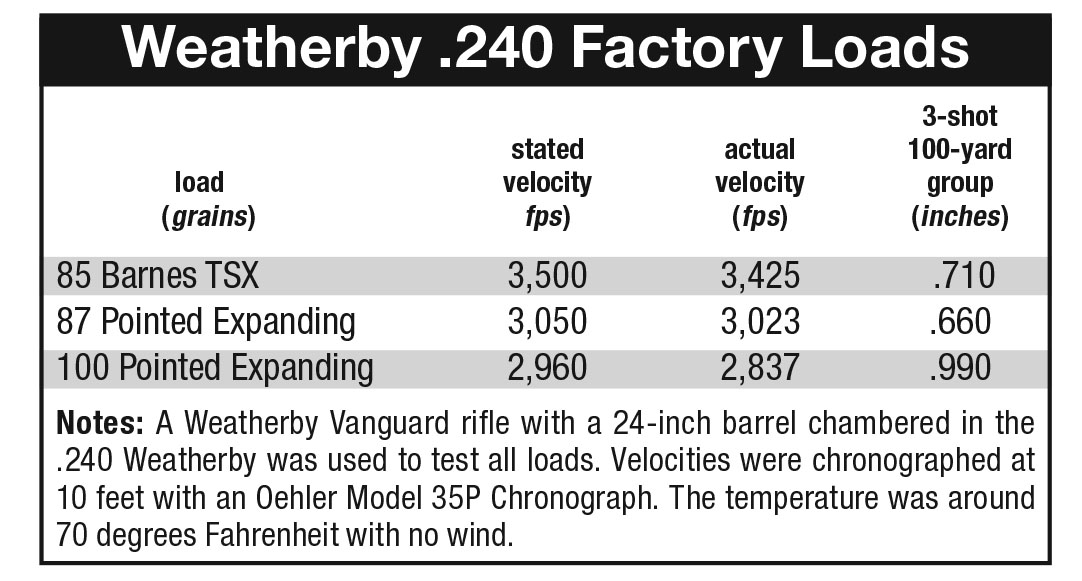Weatherby’s Vanguard Laminate Series 2 Sporter Rifle
other By: Stan Trzoniec | January, 26
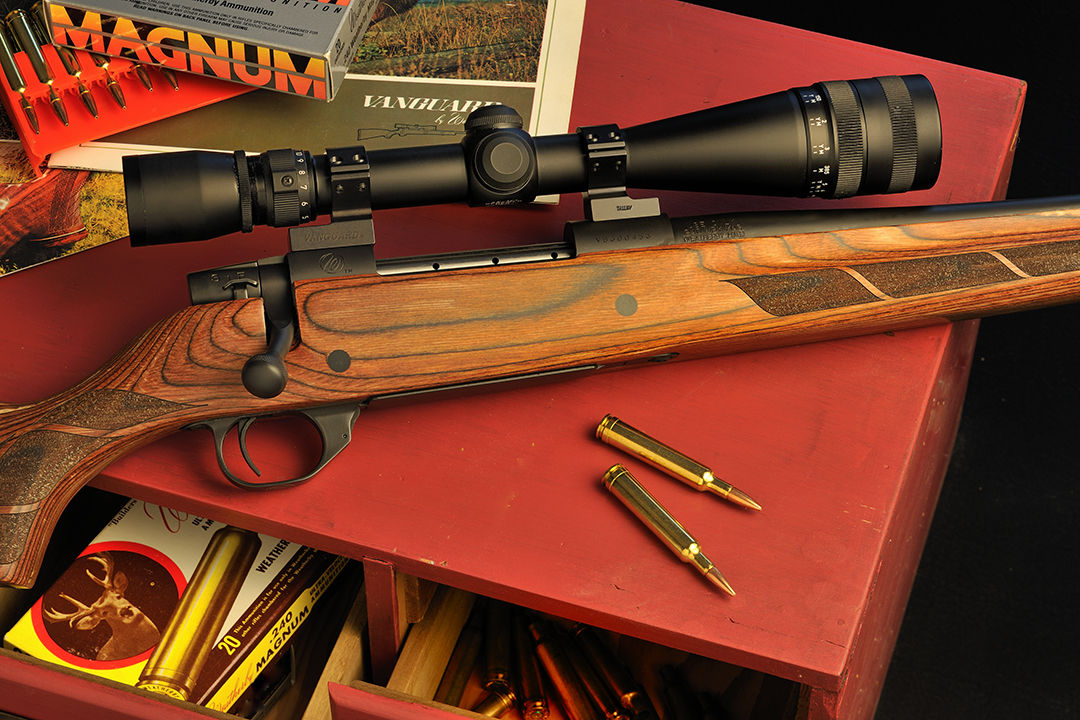
According to one of the first Vanguard catalogs I have on file from its introduction more than 50 years ago, Roy Weatherby wanted a rifle that would sell for a lower price than the famed Mark V with no sacrifice in quality and chambered for non-Weatherby calibers. While his list was not long, it contained all of the important items that riflemen of the day longed for in a centerfire rifle.
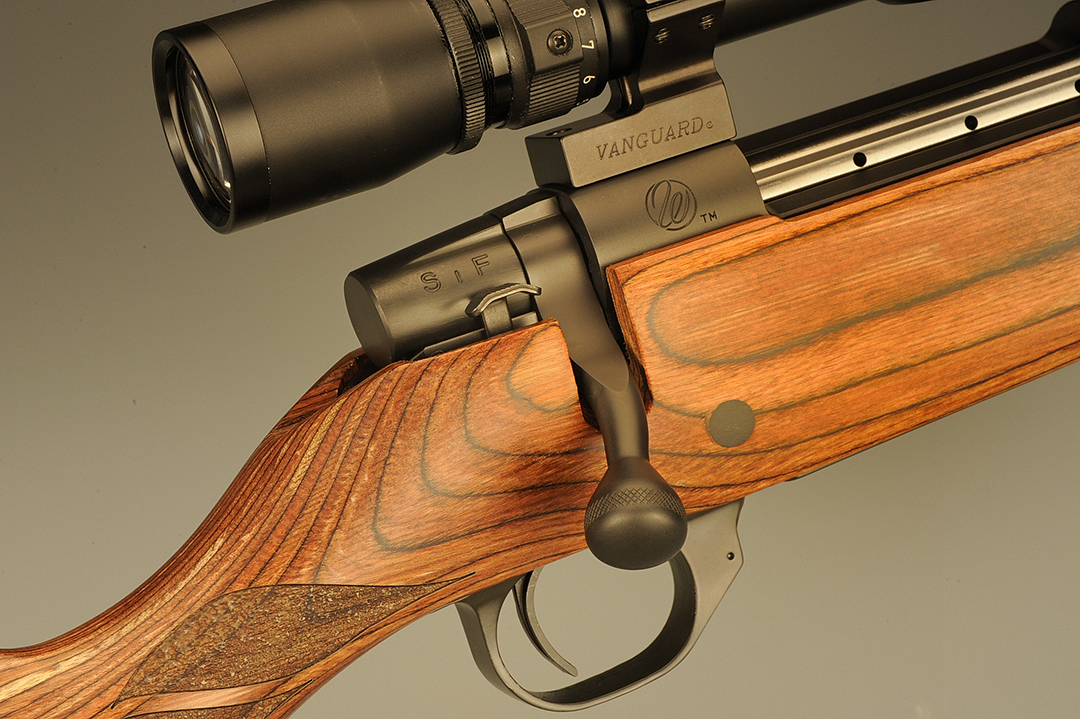
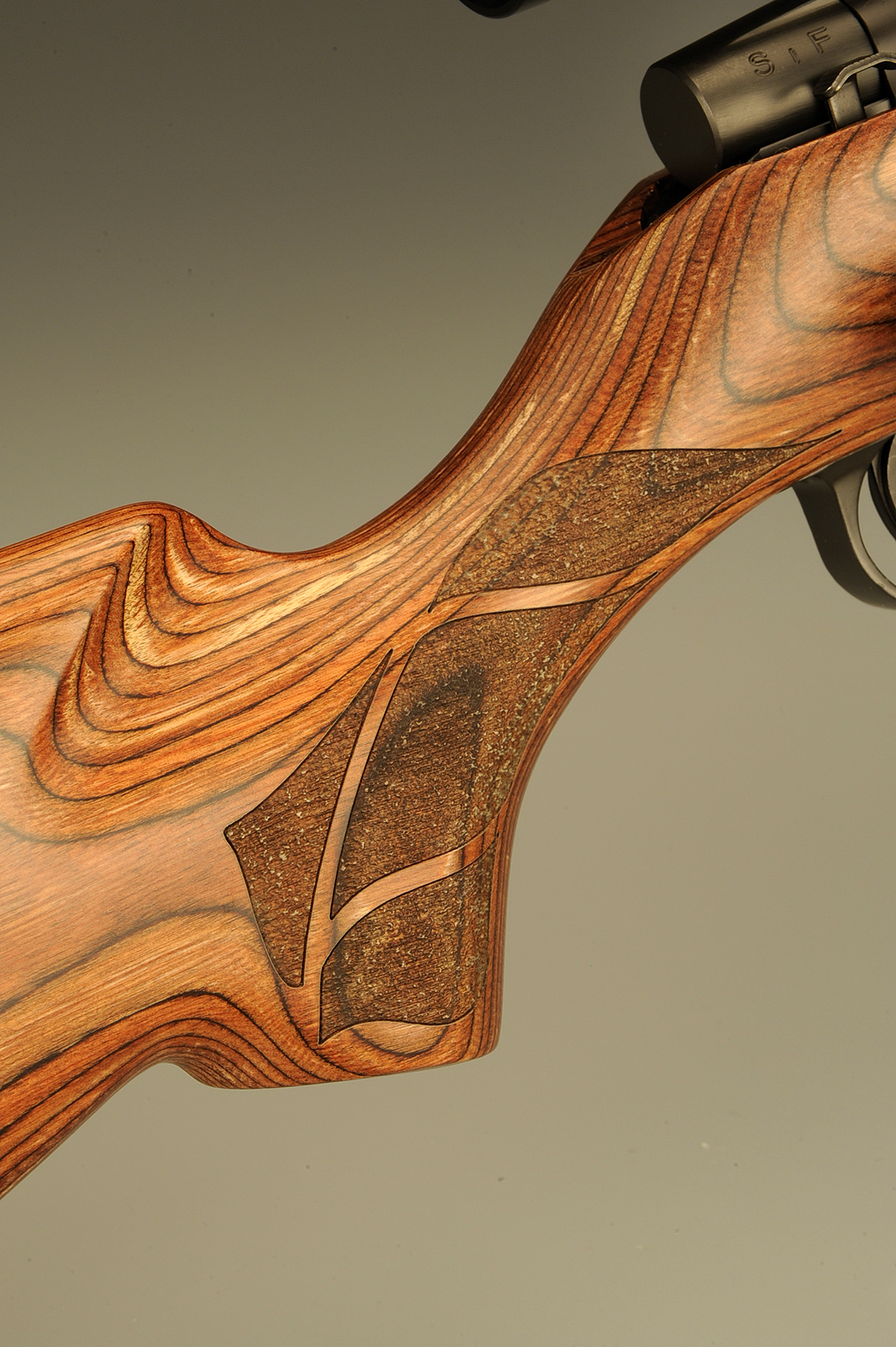
Among the priority features on his “hit list’ was a recessed bolt face, a choice American walnut stock that included hand bedding of each action to the stock, hand checkering, a quality steel hammer-forged barrel with an entry price point of under $200. To top this off, there was no extra charge for all of the six calibers, including the standard magnums up to the .300 Winchester Magnum. Since they were starting with a clean sheet of paper, an adjustable trigger, high-gloss stock finish, a moderate cast-off for the average shooter, all with an accuracy guarantee of 1.5 inches MOA at 100 yards with factory ammunition. In short, Weatherby wanted a gun in his stable to compete with the likes of the Remington 700 and Winchester Model 70.
Since that time, we all have seen many models and variations being offered to the hunting fraternity – so many in fact that it would take more than this article to cover all of them. However, a few are certainly different in the history of the Vanguard as now part of the Weatherby family. Upon its initial introduction, and with a few minor omissions, the “California” stock on the Vanguard perfectly imitated that of the Mark V. This was not done as marketing hype, but to let the buyer know that even though the gun is less expensive (read more affordable) than its counterpart, for those who embraced the lines, features and profile of the Mark V, they had it all here in this gun right down to the white line spacers, checkering and even the recoil pad. As the Vanguard moved through the years, it went through synthetic stocks of all kinds, blued or stainless actions, Compact Youth models complete with a full-sized stock as your son or daughter moved into their later years. Varmint models were popular as well, as were handpicked guns chosen for SUB-MOA rifles in all calibers now, with a guarantee of three-shot groups of .99 inch or less, right from the box with premium ammunition.
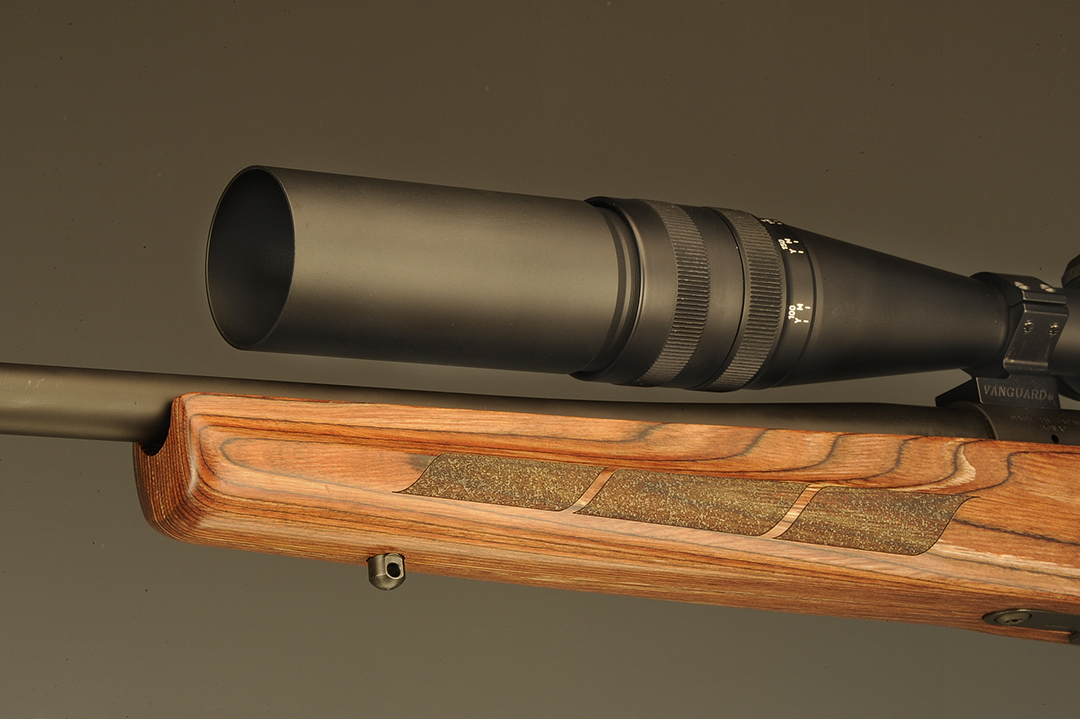
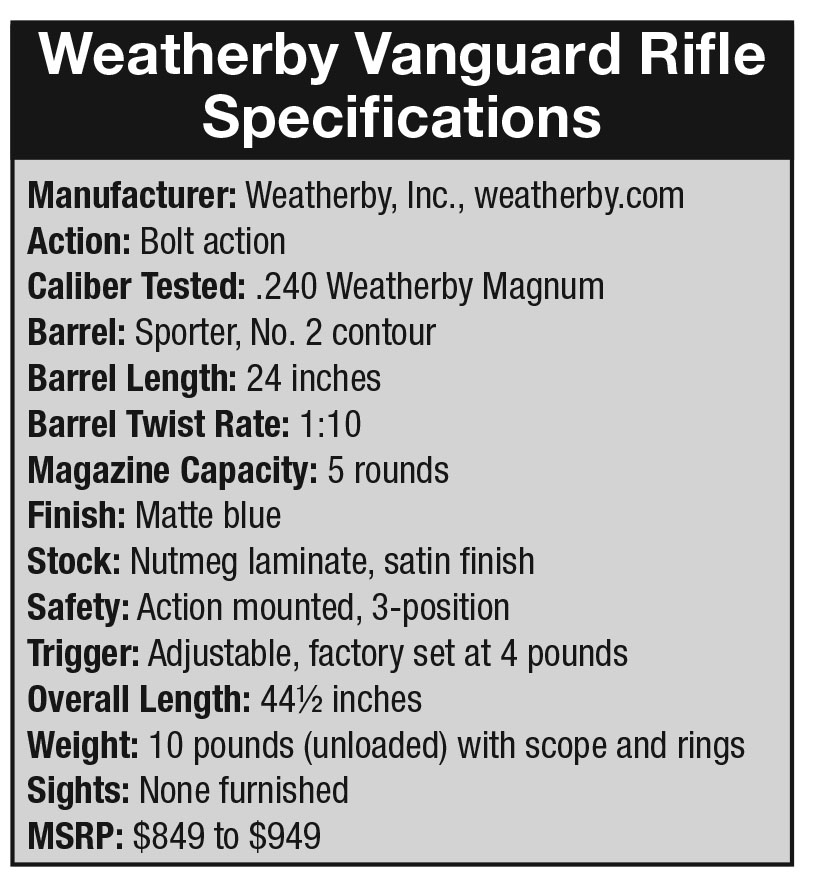
With barreled actions made by Howa of Japan, presently the Vanguard is an important part of the Weatherby lineup. With 17 models stocked from wood to camouflage to laminated guns and now chambered for both standard and Weatherby cartridges with a limited selection of the latter as not to take away the thunder of the top of the line Mark V. Presently, with so many variations, it’s hard to pick a particular model, but I settled on one of the more
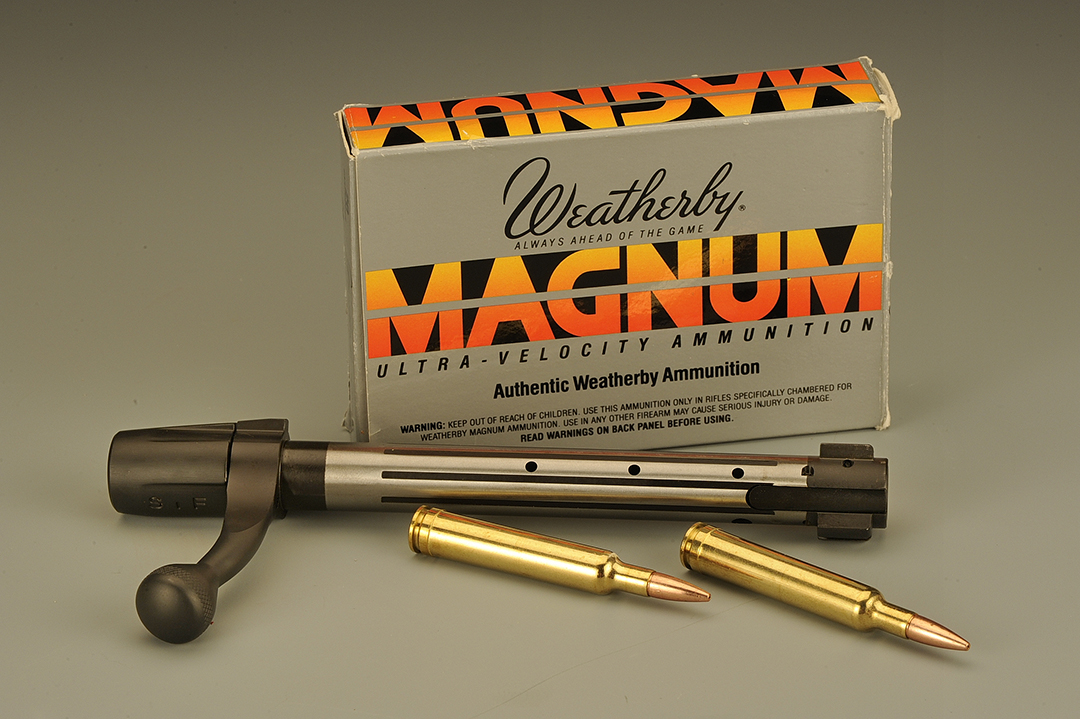
recent guns called the Laminate Sporter. All decked out with a full-laminated nutmeg coloration, this gun and stock are made for the rugged outdoors complete with a weather-resistant finish and stippled-checkering patterns. Presently available in 14 calibers with 11 standard cartridges and the .240, .257 and the .300 in the Weatherby Magnums, it offers a great choice for the serious outdoorsman. For my rifle, I picked the .240 Weatherby; a neat .243-inch bore worthy of anything from varmints to pronghorn antelope or common deer.
Like every Weatherby ever made, the distinctive stock profile is still there minus a few trademark features like the angled forend tip, grip cap or white line spacers. In their place, we have a sharp-looking, made-for-work rifle that I for one, find very attractive and easy to shoot. According to press literature, the stock is made and finished by Boyd’s, a premium stock producer for many of the top American brands today. In years past, most stock makers did not like to work with a laminated blank as between the hardwood layers and the epoxy that secures all the 32 sheets together was tough on cutting tools. With new carbide tooling, that has changed, which has now led to stocks of various color combinations, unique checkering patterns and tight inletting. Keep in mind that laminated stocks add to the weight of a gun, a consideration for those who might like a “walking” varminteer in their gun rack.
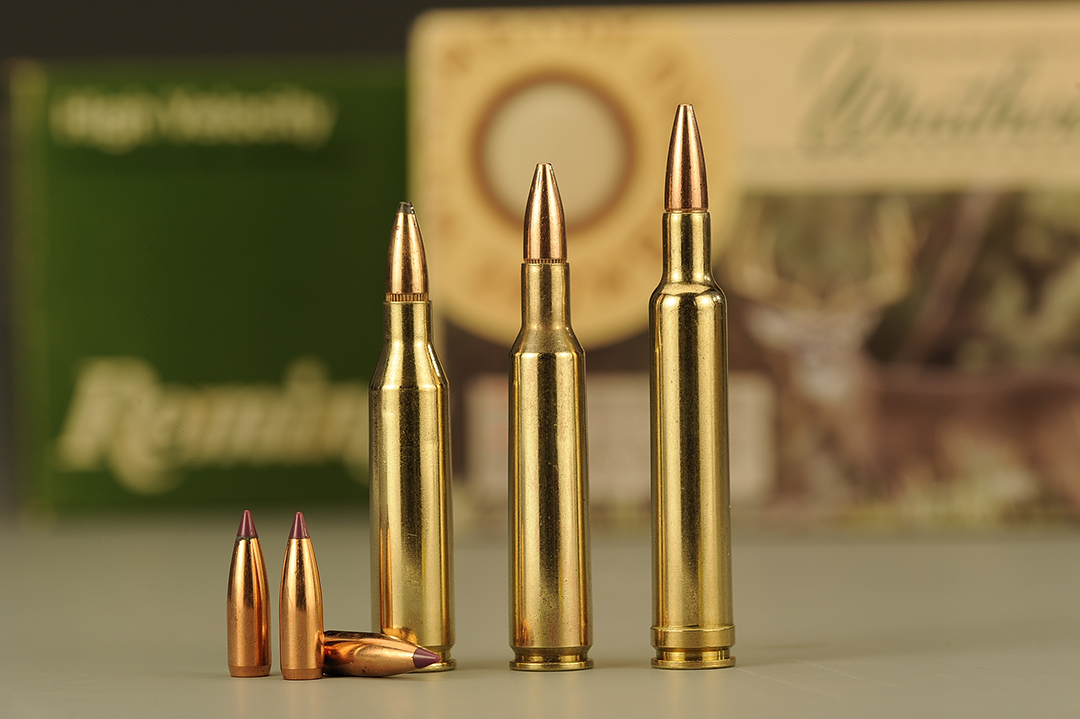
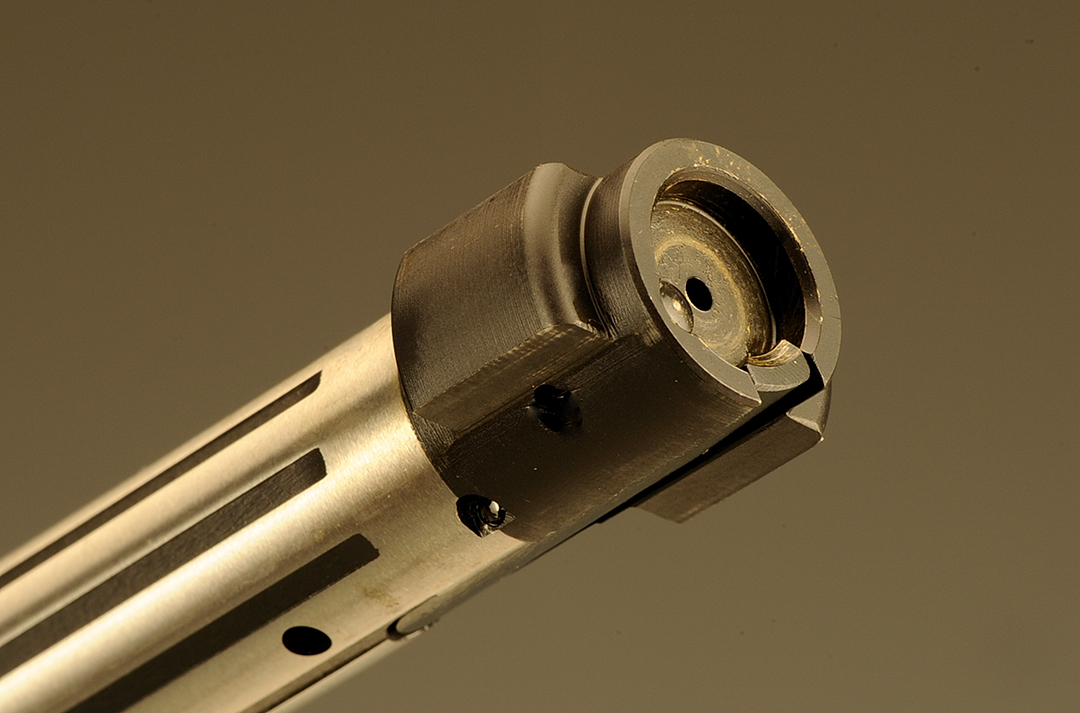
From the muzzle end, the stock is rounded off to a pleasing contour and slipping a dollar bill under the barrel shows it’s free-floated right up to the barrel/receiver juncture. On the upper part of the forearm, finger grooves grace each side, just below are three panels of stippling complete with custom ribbons between each. Closer to the receiver, the stock widens out to house the “bottom metal” consisting of the magazine and trigger group.
The pistol grip has that “just right” feel and sweep to it and is complimented by four stippled panels separated by ribbons, again something we would see on a full custom rifle. There is no pistol grip cap, but there is the flying “W” laser engraved in its place. Typical of the Weatherby family of rifles, the butt part of the stock does have a slight cast-off for right-hand shooters, while remaining that California-style of stock making. Sling swivel studs and a Pachmayr classic pad with a black spacer finish the stock.
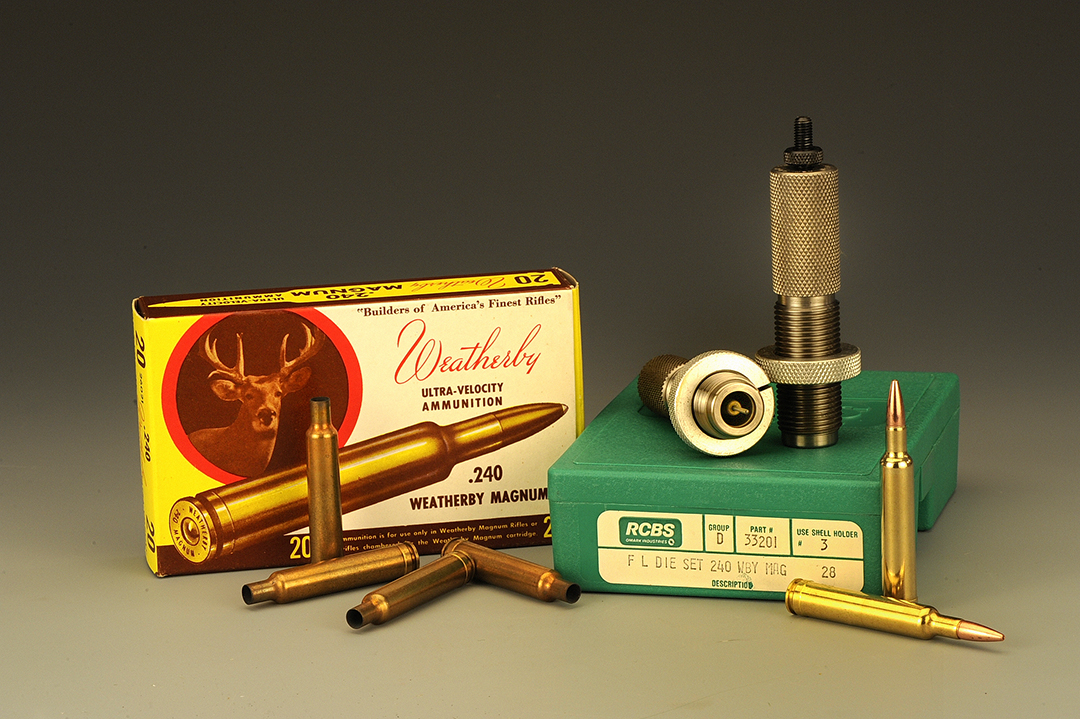
The comb is lower in the front than in the back (again a Weatherby trademark) allowing the recoil away from the face when firing the gun. The cheekpiece and the comb are just right as to center my eye on the reticle of the Redfield Premium Five Star 4-12x 40mm scope I had in stock. By the way, this is a new scope to me, has never been used, still in the box and purchased at a recent gun show. Don’t look for it in the recent Redfield catalogs as I’m sure this model goes back a few years. It appealed to me because of its many distance markers on the objective lens with an additional locking ring to hold those settings. Mounted in the combination ring and base set for the Vanguard by Talley, the Howa action is next.
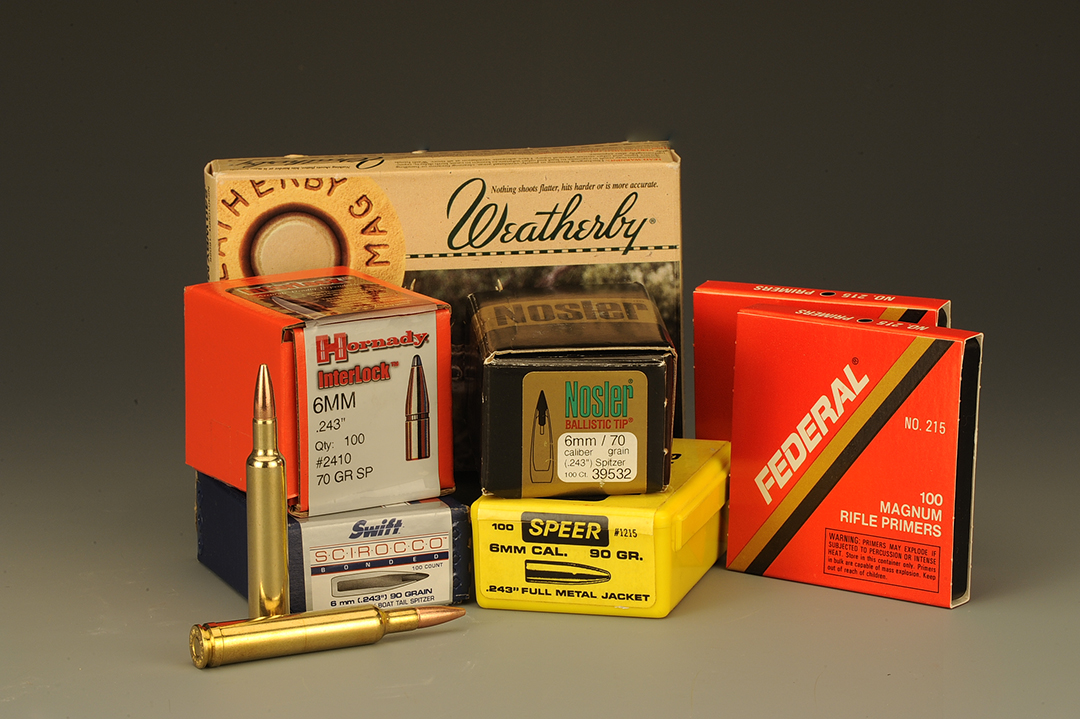
On this series, the gun has a matte blue cold hammer-forged barrel with a No. 2 contour to include the non-magnums and the .240 Weatherby in a 24-inch length. If you order the gun in a magnum chambering, the barrel length moves up to 26 inches without sights. Mated to the receiver, it all adds up to a very attractive package.
The ejection port is 3½ inches long, making the receiver itself a little shy of double at 6½ inches, adding in the bolt shroud and we are talking about a tick past 8 inches. There is one hole on the left side of the forward bridge and along with four additional holes on the bolt itself will help to relive the pressure of any rogue cartridge that may give you trouble down the road and for bedding, an integral recoil lug is part of the receiver.
Taking its cue from the Mark V, the bolt body is a “fat bolt” with an equal measurement from .680 inch from behind the locking lugs to the face of the bolt handle and over the years has shed the outboard extractor. The bolt handle is swept to allow for easier cocking of the gun, is flattened out to accommodate any eyepiece of the larger scopes today and has a small ring of knurling around the knob. The shroud is finished matte, like the rest of the action, and the S (safe) and the F (fire) are not highlighted in red like on past models.
As mentioned, gone is the long extractor along the bolt, now in its place is the more modern version leading out to the bolt face. The ejector is a plunger affair and works with no problems. Up front, the bolt has twin lugs with a bolt guide to keep it wobble free from extraction of the spent case to following up with a loaded round in the chamber. Finally, the bolt body is fluted for a smooth operation regardless of the weather conditions or possibly some debris forming in this area. The trigger is now a two-stage affair, which I like and from the factory broke at a crisp 4 pounds. For general hunting, I find this a good compromise with this type of trigger mechanism. For varmint shooting, I would definitely bring it down a bit more.
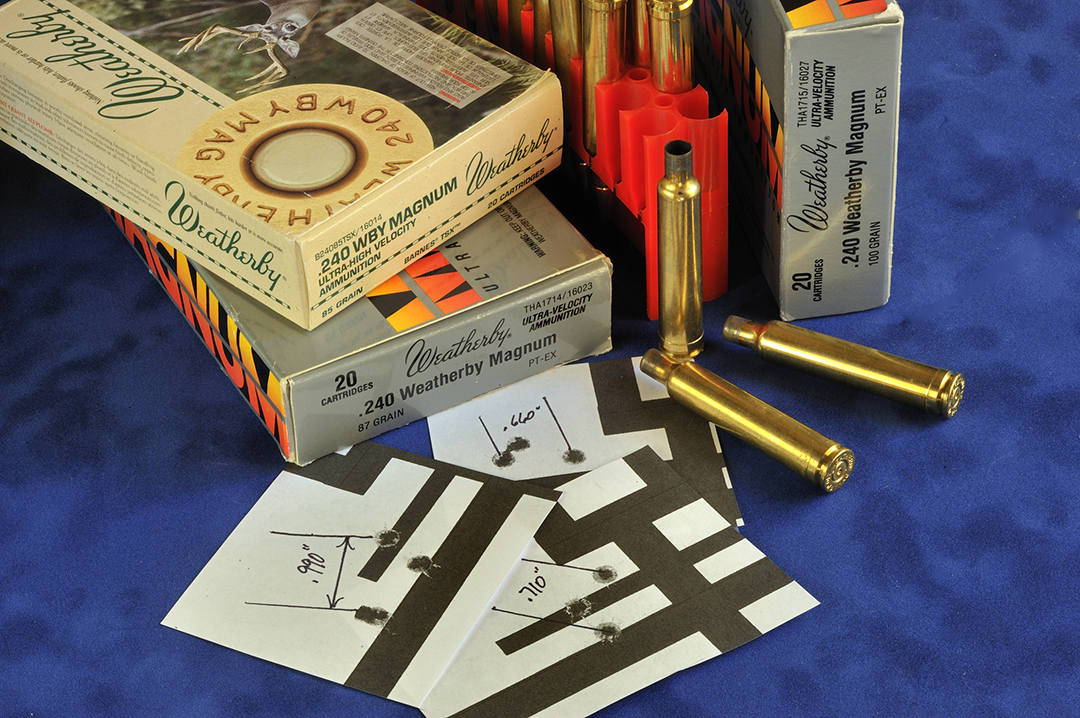
Introduced in 1968 by Weatherby himself, my sample was chambered for the .240 Weatherby Magnum, and like the parent .257 Weatherby, are two of my personal favorites. I have shot many rifles in the .24 caliber from the .243 Winchester to the 6mm Remington, and with a little more velocity, especially when using lighter bullets for varmints; I find I can stretch out my shooting day a little more on the North 40. For heavier bullets like a 100-grain projectile for plains game for example, the .243 Winchester will top out (depending upon the rifle and load) around 2,960 feet per second (fps) while the .240 Weatherby will hit around 3,200 plus with a 24-inch barrel, slightly more at 3,406 with Weatherby’s optional 26-inch tube. With a normal barrel, that’s roughly a 9 percent increase, but with the longer barrel, it does measure up to a 15 percent increase, enough to give the company bragging rights in the .24-caliber market. Handloading the .240 case, it holds 64 grains of water. Compared to the 6mm Remington with 58.4 and the .243 Winchester at 56.7, it is easy to see a definite advantage here. Dealing with the .240 as a varmint round, and using the 6mm Remington as an example, it would take this round 44.6 grains of IMR-4064 to reach 3,700 fps. With the .240 WM, I am looking at 47.4 grains of the same powder to take it to 3,900 fps plus with a moderate recoil.
With many Vanguard’s behind me, I still find them accurate and a pleasure to shoot. Handling the gun is smooth in feeding with spent cases flying out the gun with enthusiasm to my right side. The rifle loads with no hesitation as rounds are placed into the magazine well. Typical of rifles today, the safety is 3-positon, rearmost is safe with the bolt locked, midpoint allows the shooter to work the bolt when loading or changing rounds, full forward is fire.

When it came to range testing, I went out of my way to prove the statement that reads in part (and I quote), “Weatherby Guarantees SUB-MOA Accuracy within Two Years of Verified Purchase Date to Original Purchaser. All Weatherby® Mark V® rifles and Vanguard® Series 2 rifles are guaranteed to shoot a .99″ or better 3-shot group at 100 yards from a cold barrel using premium (non-Weatherby calibers) or Weatherby factory ammunition.” Unquote. After sighting-in the rifle the week before to shoot from a cold barrel, I settled in at the bench with the rifle and a good book and proceeded to fire one round every 10 minutes to keep the barrel cool. Additionally, I tried not to move the gun from the sandbags in order to keep consistency a big part of the testing. I know this seems extreme, but the day was extremely calm with morning with temperatures hovering around 70 degrees Fahrenheit, in short, everything was lining up. In the end, this casual test proved the gun was capable of shooting groups under a MOA with Weatherby ammunition, a statement by the company now proven in real time on the table included with this feature.
Finishing up, I continue to find the Vanguard series from Weatherby is a finely crafted rifle still worthy of the concept put forth by Weatherby more than a half century ago. Combining moderate recoil, great accuracy, finish and the right price point – you can’t beat that, even today.


